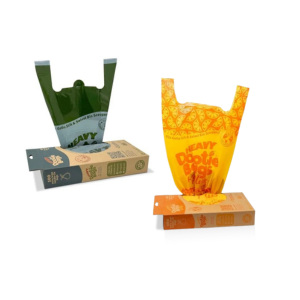
Making Life Clean, Quick and Convenient
Making Life Clean, Quick and Convenient
The color of dog poop shows some very important health indicators on your pet. Although poop cleaning is anything but fun Scooping up after your dog can be a great way to see early signs of illness by monitoring their poo.
The article goes though what you can expect from healthy stool shades to danger zones, backed with dog poop color chart, and real samples and feedback from pros. We will also talk about the tools to make your life easier like dog waste bags with handles, Dog Butt Wipes for the bum and relief sticks for the poop.
Understanding dog poop color starts with recognizing what’s normal. A healthy dog typically passes firm, chocolate-brown stools. However, variations in color can signal anything from diet changes to health concerns. This simple dog poop color chart can help:
Color Possible Cause Recommended Action
| Color | Possible Cause | Recommended Action |
| Brown | Normal, healthy | No concern |
| Yellow | Food intolerance, liver issues | Monitor and consult vet if needed |
| Green | Grass, toxins, parasites | Keep an eye on behavior |
| Orange | Diet-related (e.g., bland foods like chicken & rice) | Usually temporary |
| Red Streaks | Blood in lower GI tract | Vet visit recommended |
| Black/Tarry | Internal bleeding (upper GI) | Emergency situation |
| White Spots | Parasites or excess calcium | Contact your vet |
A dog poop color chart with pictures provides a visual guide to help dog owners distinguish healthy poop from problematic stools. Seeing real examples of different dog poop color variations makes it easier to understand when to relax and when to take action.
If you’re out walking your dog, don’t forget to bring along essentials like dog poop bags with handles or convenient go-go bags to clean up responsibly. Using a poop stick can also make picking up easier and more hygienic. And once cleanup is done, dog wipes for bum are great for keeping your dog fresh and clean.
The most common and healthiest dog poop color is brown. It indicates normal digestion and well-balanced nutrition.
Light brown: This may be caused by a bland or low-protein diet
Dark brown: Often the result of meat-heavy diets or supplements
As long as the consistency and smell are normal, this dog poop color is nothing to worry about.
Dog poop color yellow can be caused by:
While occasional yellow stool may not be urgent, if your dog frequently passes yellow poop with diarrhea or lethargy, consult your vet. This dog poop color can be an early warning sign of deeper problems.
Sometimes due to these dog sufferr rabbies, Rabies Vaccine for Dogs | Protection and Schedule
If you notice dog poop color green, it could mean your dog:
Green poop is not always serious, but it’s important to monitor your dog’s behavior. If this dog poop color continues for more than two days, a vet visit is recommended.
Seeing orange poop in a dog after chicken and rice is common when transitioning to a bland diet. This dog poop color often results from the following:
As long as your dog is active and the color returns to brown in a day or two, the orange stool is generally harmless.
It’s essential to know what unhealthy dog poop color and texture look like. Some alarming signs include:
Seeing unhealthy dog poop pictures online can help pet owners compare what they’re observing at home with expert examples. This can guide you on whether to seek veterinary care.
You may be searching for “Show me pictures of dog poop” to understand your own dog’s health better. While we can’t embed graphic photos here, many veterinary apps and sites provide clear photo galleries. These help you visually compare different dog poop color variations, so you know what’s within normal range and what’s not.
While puppies, in general, have a shorter regular bowel (sometimes every 2–3 hours) depending on their age and schedule.
A change in diet or health issue, your dog is suddenly k-cleaning the grass much more/less than normal!
Most healthy dogs will be able to go as long a 48 hours without having to go. One or two days missed is rarely even noted. But if you dog is straining, or more than this time frame call your vet.
Checking your dog’s stool might not be the most fun activity, but it is a huge part of health. Dog poop color brown, yellow, green, or even another uncommon color, the sooner you can detect and prevent major health issues from arising.
Also, remember to be a responsible pet owner by using quality dog poop bags with handles or go-go bags when cleaning up outside. Use a poop stick for easy pickup and dog wipes for bum to keep your dog clean and comfortable after walks.
Use the dog poop color chart regularly, review the dog poop color chart with pictures if you’re unsure, and seek veterinary advice if you notice consistent changes in dog poop color.
Healthy dog poop is typically chocolate brown in color.
Yes, wiping your dog’s bum helps maintain hygiene and prevent irritation.
Pancreatitis in dogs often causes pale, greasy, or yellowish stool.
Sloppy dog poop is usually a sign of dietary issues, stress, or digestive upset.

Bundle

Bundle

Bundle

